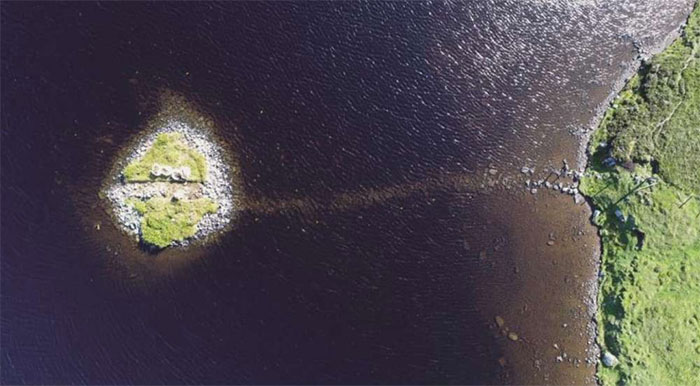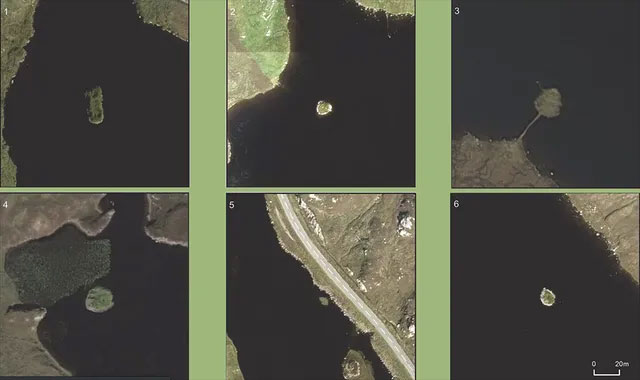Hundreds of small islands around Scotland are not naturally occurring. A new study reveals that they are some of the earliest artificial products created from stones, clay, and wood by Neolithic people around 5,600 years ago.
Researchers have actually known about these artificial islands, called crannogs, for decades. However, many archaeologists believed that crannogs were constructed more recently, during the Iron Age, approximately 2,800 years ago.
What is a Crannog?
Crannog in Scottish Gaelic means “young tree”, alluding to the solid foundations of these artificial islands built by driving long wooden piles into the lakebed before filling them with stones weighing up to 250 kg and other natural materials. An enigmatic tribe lived on these artificial islands for thousands of years, until the 17th century.
Since the 1990s, archaeologists have begun reconstructing crannogs on Loch Tay in Perthshire, Scotland. Project participants used modern tools to gather materials and cut wood over three years. They then manually drove wooden piles, ranging from 7 to 9 meters long, made from local alder trees, into the lakebed. Constructing a crannog—now a center for Scottish Crannog—required at least 168 wooden piles, supported by a complex wooden scaffolding.
“The project is a technical feat for us. Therefore, I am astonished by the crannog-building skills of ancient peoples,” shared underwater archaeologist Barrie Andrian.

One of the artificial islands in Scotland.
Unanswered Questions
This new discovery not only indicates that the origins of these artificial islands are much earlier than previously thought but also suggests they were a “special site” for the Neolithic people, according to nearby pottery fragments discovered by modern divers, the researchers wrote.
Initially, many researchers believed these special products were built around 800 BC and were reused until the late medieval period in 1700. However, in the 1980s, hints began to emerge that some of these islands had been created much earlier.
Additionally, in 2012, Chris Murray, a former Royal Navy diver, found well-preserved stone pots at the bottom of the lake near some of these islands and reported his discovery to a local museum.
To investigate further, two British archaeologists, Duncan Garrow from the University of Reading and Fraser Sturt from the University of Southampton, collaborated in 2016 and 2017 to gain a comprehensive understanding of some crannogs in the Outer Hebrides, an artificial island off the northern coast of Scotland.

The location of several other relatively small artificial islands.
Specifically, they examined small islands in three lakes: Loch Arquer, Loch Bhorgastail, and Loch Langabhat. Radiocarbon dating indicates that four of the crannogs were created between 3640 and 3360 BC. Other evidence, including ground and underwater surveys, excavation, and environmental sampling, supported the idea that these special small islands date back to the Neolithic period.
Archaeologists have yet to find any new stone structures on the islands, and they stated that more excavation is needed. However, divers have discovered dozens of Neolithic pottery fragments, some of which are burned, around the small islands of Bhorgastail and Langabhat.
These pots may have been intentionally dropped into the water, possibly for a ritual, researchers noted.
Each artificial island is relatively small, measuring about 10 meters in width. One small island in Loch Bhorgastail even has a stone causeway connecting it to the mainland. It certainly took a lot of effort to create these artificial islands, which were clearly significant to ancient peoples.
Researchers have indicated that so far, only 10% of crannogs in Scotland have been verified through radiocarbon dating, meaning there could be many more ancient crannogs yet to be discovered.

















































